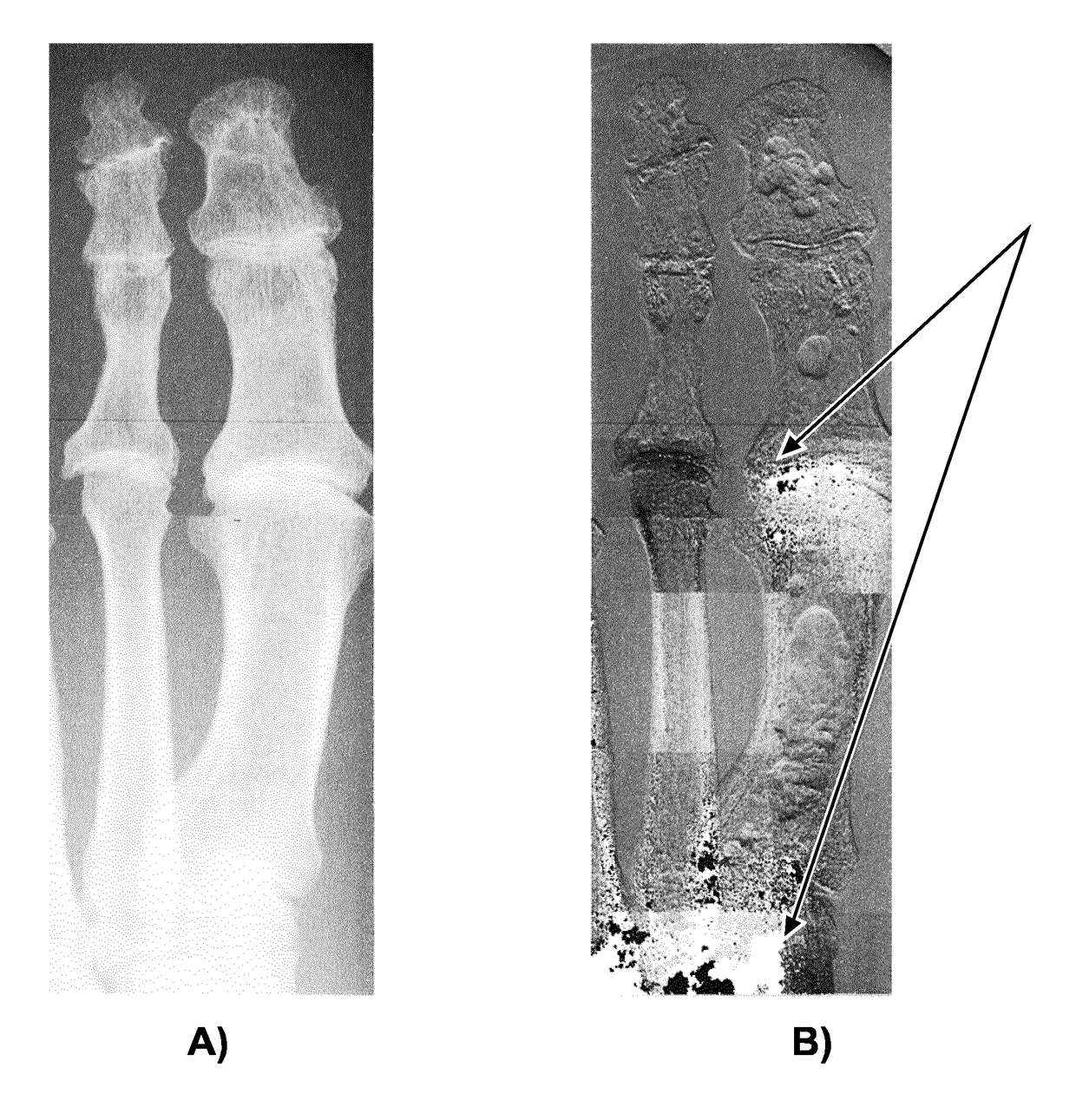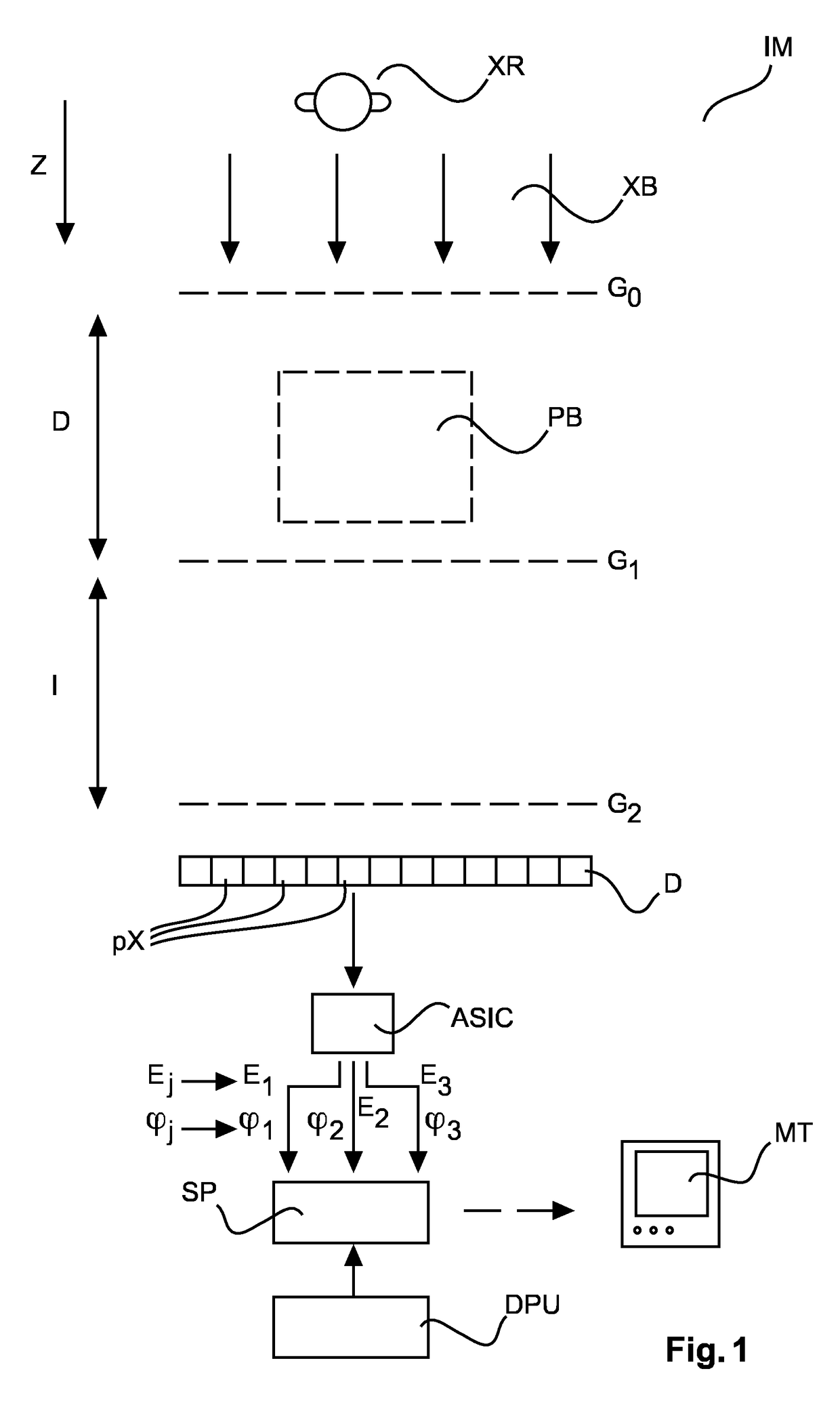Bias-free regularization for spectral phase-unwrapping in differential phase contrast imaging
a technology of differential phase contrast and bias-free regularization, which is applied in image generation, image enhancement, instruments, etc., can solve the problems of only a limited angular range of interferometer, ambiguous phase shift data obtained via interferometer, and visible artifacts, so as to improve accuracy
- Summary
- Abstract
- Description
- Claims
- Application Information
AI Technical Summary
Benefits of technology
Problems solved by technology
Method used
Image
Examples
Embodiment Construction
[0036]FIG. 1 shows basic components of an imaging system IM with phase contrast imaging capabilities, in particular differential phase contrast imaging (DPCI). There is an X-ray source XR for generating X-ray radiation waves XB that, after passage through an examination region, are detectable by detector pixels px of a detector D. The phase contrast imaging capability is achieved by an interferometer arranged between the X-ray source XR and the radiation sensitive detector D.
[0037]The interferometer (which in one unlimiting embodiment is of the Talbot type or of the Talbot-Lau type) includes two G1, G2 (Talbot type) or more, preferably, three gratings G0, G1 and G2 (Talbot-Lau type). The first attenuation grating G0 at the X-ray source side has a period p0 to match and cause spatial coherence of the X-ray radiation wave front emitted at the X-ray source XR.
[0038]An absorption grating G1 (having period p1) is placed at distance D from the X-ray source and causes an interference patte...
PUM
 Login to View More
Login to View More Abstract
Description
Claims
Application Information
 Login to View More
Login to View More - R&D
- Intellectual Property
- Life Sciences
- Materials
- Tech Scout
- Unparalleled Data Quality
- Higher Quality Content
- 60% Fewer Hallucinations
Browse by: Latest US Patents, China's latest patents, Technical Efficacy Thesaurus, Application Domain, Technology Topic, Popular Technical Reports.
© 2025 PatSnap. All rights reserved.Legal|Privacy policy|Modern Slavery Act Transparency Statement|Sitemap|About US| Contact US: help@patsnap.com



